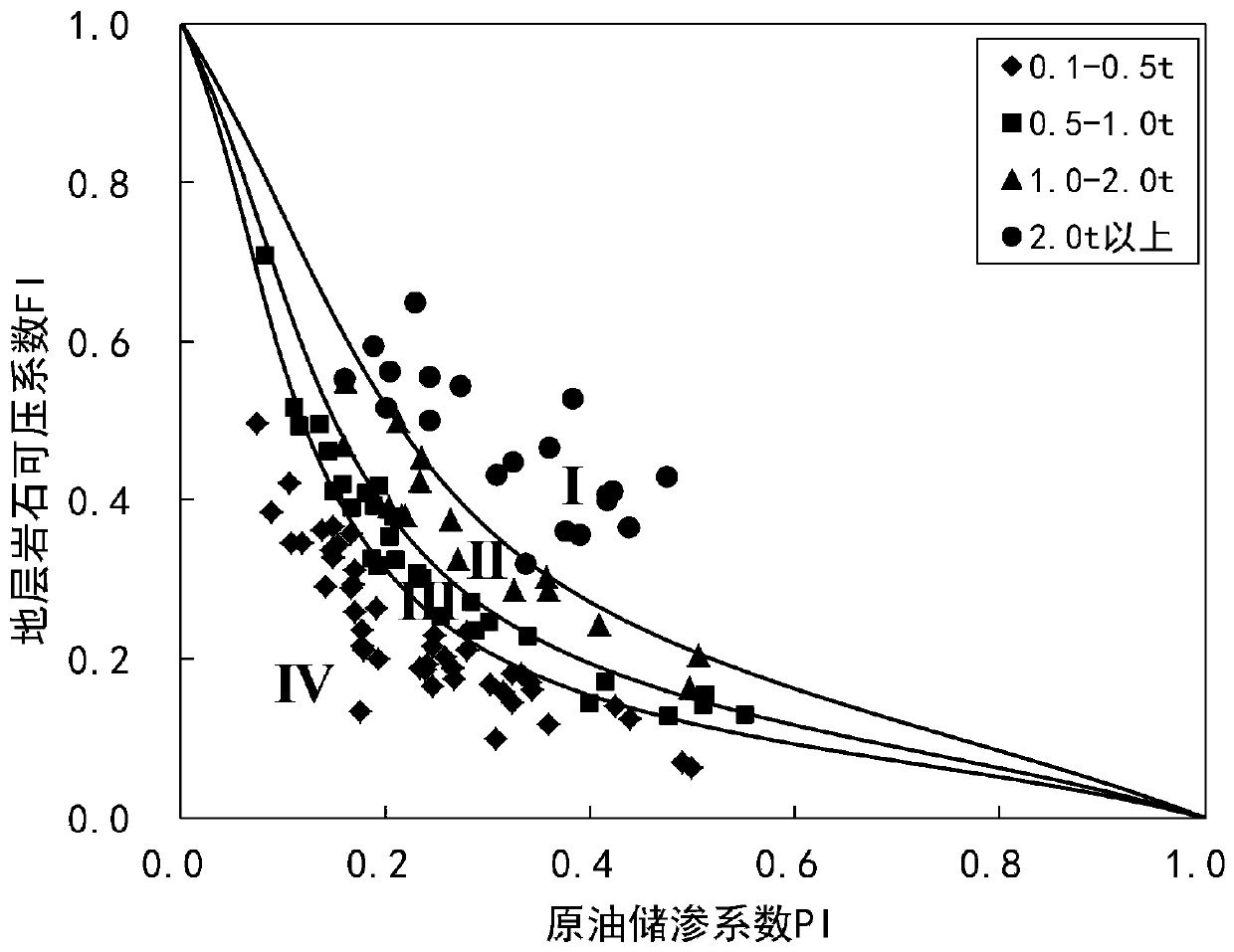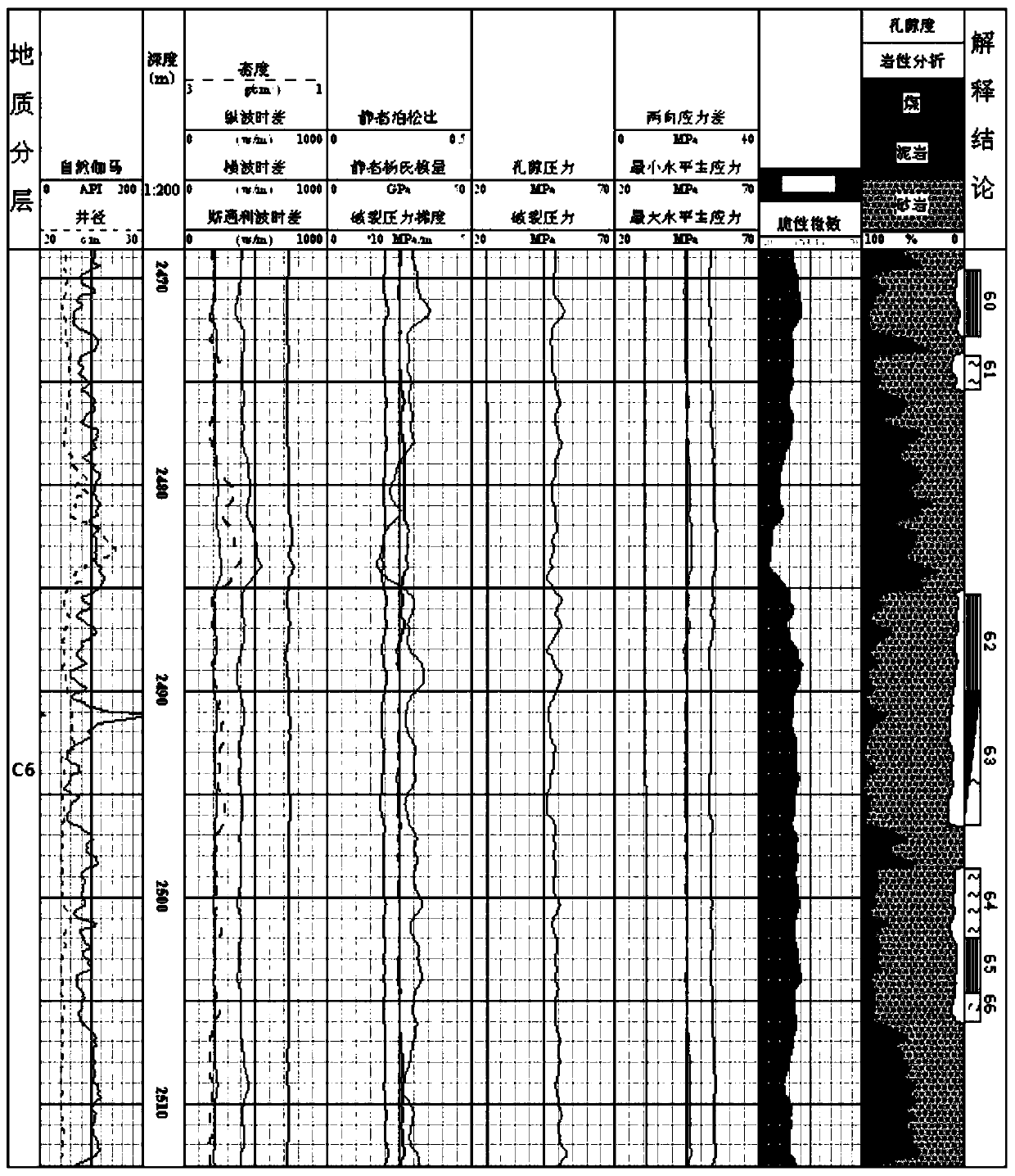Method for performing comprehensive classified evaluation on ultralow-permeability oil reservoir
An evaluation method and oil-penetrating technology, applied in earth-moving drilling, wellbore/well components, etc., which can solve problems such as single consideration factors, large differences in research results, and incompleteness.
- Summary
- Abstract
- Description
- Claims
- Application Information
AI Technical Summary
Problems solved by technology
Method used
Image
Examples
Embodiment 1
[0043] refer to figure 1 and figure 2 , a method for comprehensive classification and evaluation of ultra-low permeability reservoirs, comprising the following steps:
[0044] Step 1: For the completed oil wells in different production ranges of the same reservoir, first select the type of parameters that characterize the compressibility of ultra-low permeability reservoir rocks;
[0045] Step 2: According to the size of the compressibility parameter values of different types in the reservoir rock compressibility parameters in step 1, first perform normalization processing, and then use the analytic hierarchy process to determine the impact of various compressibility parameters on the reservoir rock The weight value of the impact of compressibility, and calculate the compressibility coefficient FI of formation rock;
[0046] Step 3: For the drilled oil wells under different productivity ranges in the same reservoir, select the type of characteristic parameters that charac...
Embodiment 2
[0052] refer to figure 1 and figure 2 , a method for comprehensive classification and evaluation of ultra-low permeability reservoirs, comprising the following steps:
[0053] Step 1: For the completed oil wells in different production ranges of the same reservoir, first select the type of parameters that characterize the compressibility of ultra-low permeability reservoir rocks;
[0054] The compressibility parameter type in the step 1 includes positive index parameters and negative index parameters;
[0055] The positive index parameters include: the brittleness index B of the reservoir rock I and natural fracture development degree D F ;
[0056] Negative indicator parameters include: clay mineral content W mc , horizontal and two-dimensional in-situ stress difference Δσ and rock fracture toughness K C .
[0057] Step 2: According to the size of the compressibility parameter values of different types in the reservoir rock compressibility parameters in step 1, firs...
Embodiment 3
[0078] refer to image 3 , Figure 4 , Figure 5 , Figure 6 and Figure 7 In this example, the production data of exploration wells and evaluation wells in Chang 6 ultra-low permeability reservoirs in the YC area of the Ordos Basin were used to verify the effects of reservoir classification and evaluation. Due to the abundant coring data of exploratory wells and evaluation wells and the high reliability of electrical logging data, the logging data of exploratory wells and evaluation wells in the Chang 6 layer in the study area were collected first. Taking the Chang 6 reservoir data of Well H300 in the YC area as an example, Chang 6 Brittleness index B I , Horizontal two-direction ground stress difference Δσ = maximum horizontal ground stress - minimum horizontal ground stress, pore pressure p p , rock density ρ, shear wave time difference ΔT, and electrical gamma value GR can be obtained by array acoustic logging (eg image 3 ); the degree of development of natural fr...
PUM
 Login to View More
Login to View More Abstract
Description
Claims
Application Information
 Login to View More
Login to View More - R&D
- Intellectual Property
- Life Sciences
- Materials
- Tech Scout
- Unparalleled Data Quality
- Higher Quality Content
- 60% Fewer Hallucinations
Browse by: Latest US Patents, China's latest patents, Technical Efficacy Thesaurus, Application Domain, Technology Topic, Popular Technical Reports.
© 2025 PatSnap. All rights reserved.Legal|Privacy policy|Modern Slavery Act Transparency Statement|Sitemap|About US| Contact US: help@patsnap.com



